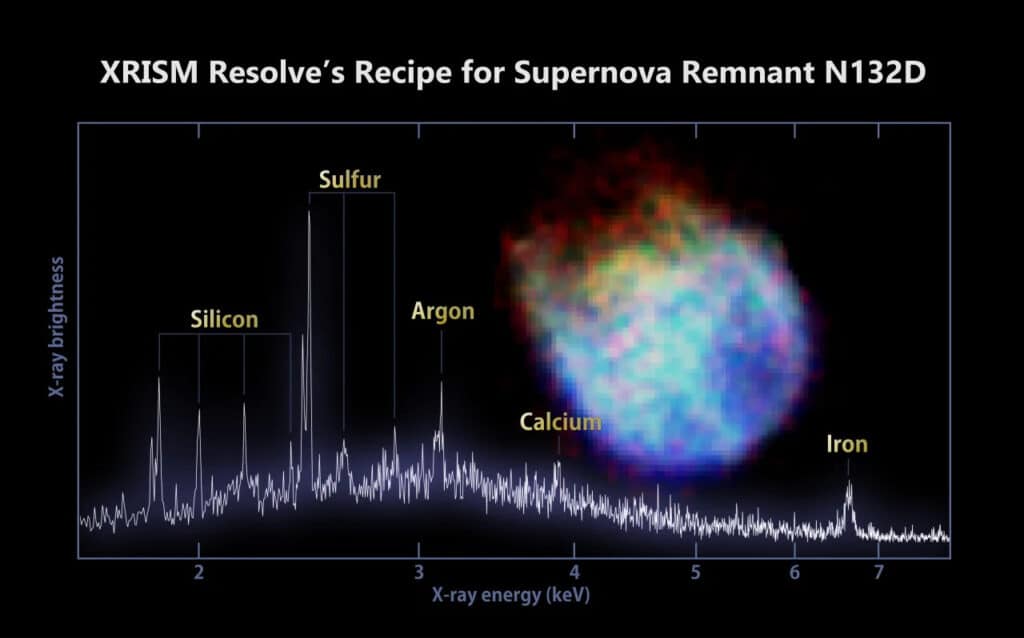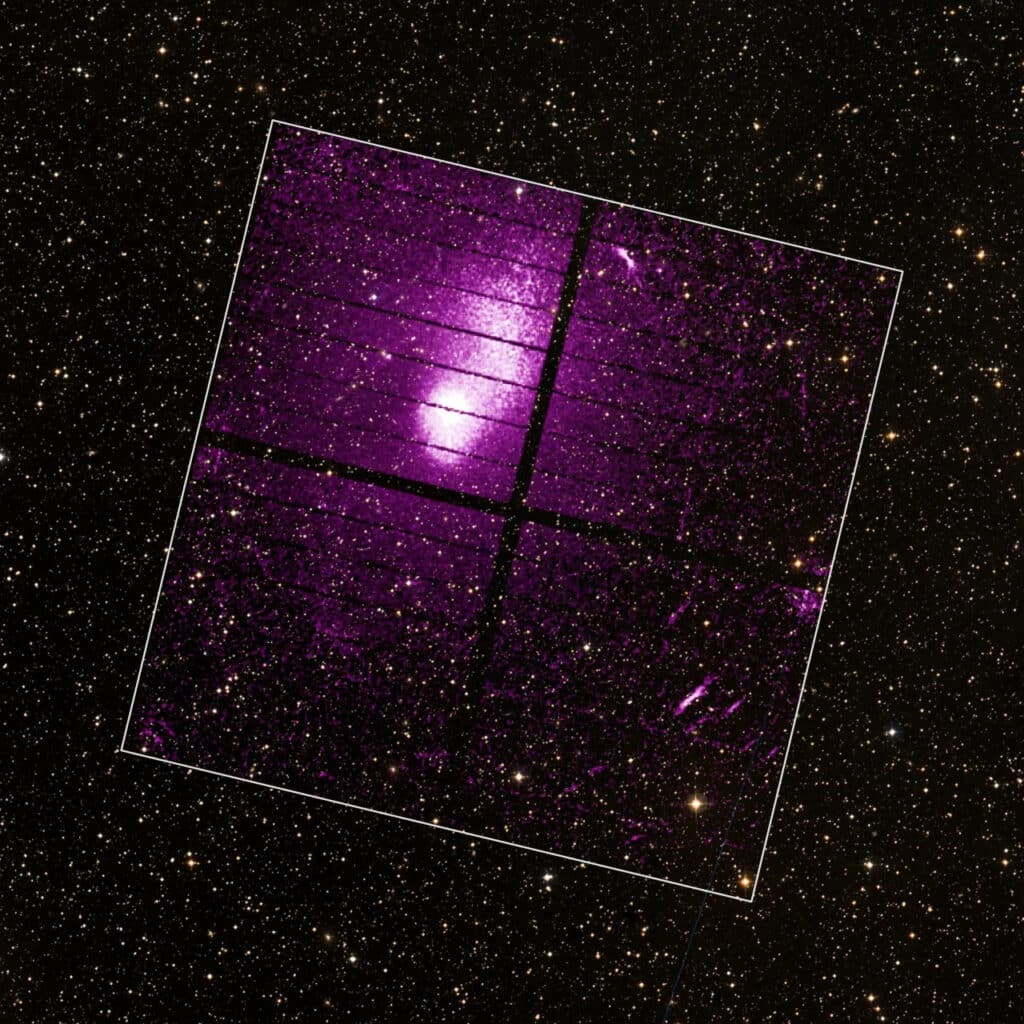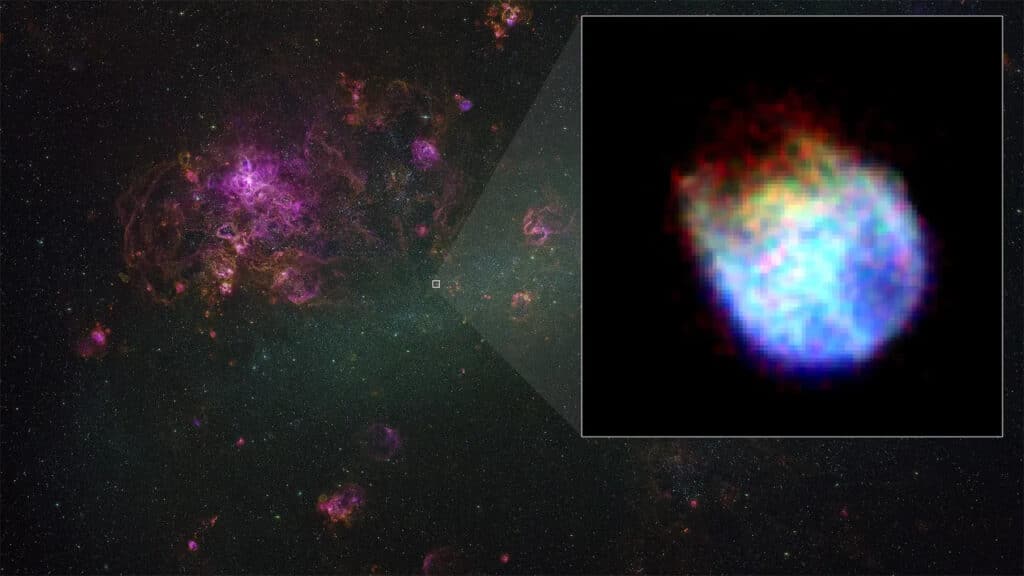The first look at the X-ray cosmos is now here. The XRISM (X-ray Imaging and Spectroscopy Mission) observatory, a Japan-led mission in collaboration with NASA and the European Space Agency, has released its initial set of data, offering a tantalizing preview of the unprecedented X-ray observations it will provide when full science operations commence later this year.
XRISM, pronounced “crism,” and led by the Japan Aerospace Exploration Agency (JAXA), aims to unveil the hidden X-ray sky.
“We’ll not only see X-ray images of these sources, but also study their compositions, motions, and physical states,” says Richard Kelley, Richard Kelley, the U.S. principal investigator for XRISM at NASA’s Goddard Space Flight Center in Greenbelt, Maryland, in a media release.

The mission’s initial data includes a snapshot of a galaxy cluster and a spectrum of a supernova remnant, providing a detailed chemical analysis of these celestial objects.
Launched on Sept. 6, 2023, XRISM’s mission is to detect X-rays with energies up to 12,000 electron volts, which is significantly higher than the energy of visible light (2 to 3 electron volts). This will allow XRISM to study the universe’s hottest regions, largest structures, and objects with the strongest gravity.
The observatory is equipped with two primary instruments: Resolve, a microcalorimeter spectrometer, and Xtend, an X-ray imager. Resolve, developed by NASA and JAXA, operates at near absolute zero temperatures inside a refrigerator-sized container of liquid helium. When X-rays hit Resolve’s detector, the slight temperature change is measured, providing detailed information about each X-ray’s energy and thus the chemical makeup of the source.
Using Resolve, the team examined N132D, a supernova remnant in the Large Magellanic Cloud, approximately 160,000 light-years away. This remnant, about 3,000 years old, resulted from a massive star’s explosion.
“These elements were forged in the original star and then blasted away when it exploded as a supernova,” explains Brian Williams, NASA’s XRISM project scientist at Goddard. “Resolve will allow us to see the shapes of these lines in a way never possible before, letting us determine not only the abundances of the various elements present, but also their temperatures, densities, and directions of motion at unprecedented levels of precision. From there, we can piece together information about the original star and the explosion.”
Xtend, the second instrument developed by JAXA, captured an X-ray image of Abell 2319, a galaxy cluster about 770 million light-years away, demonstrating its ability to observe large areas. This galaxy cluster, currently undergoing a major merger event, showcases Xtend’s wide field of view, about 60 percent larger than the full moon’s apparent size.
“Even before the end of the commissioning process, Resolve is already exceeding our expectations,” notes Lillian Reichenthal, NASA’s XRISM project manager at Goddard. “Our goal was to achieve a spectral resolution of seven electron volts with the instrument, but now that it’s in orbit, we’re achieving five. What that means is we’ll get even more detailed chemical maps with each spectrum XRISM captures.”

Despite an issue with an aperture door designed to protect the detector, which has not opened as planned, Resolve is functioning exceptionally, albeit with a limitation to higher-energy X-rays.
The XRISM mission, a collaboration between JAXA, NASA, and ESA, with contributions from the Canadian Space Agency, is set to begin its Cycle 1 of General Observer investigations in the summer of 2024. Proposals for observations are currently being accepted, marking a significant step forward in the study of the universe through X-ray astronomy.
As scientists eagerly await the full launch of XRISM’s science operations, the observatory promises to deliver groundbreaking insights into the dynamics and chemistry of cosmic phenomena, reshaping our understanding of the universe.












